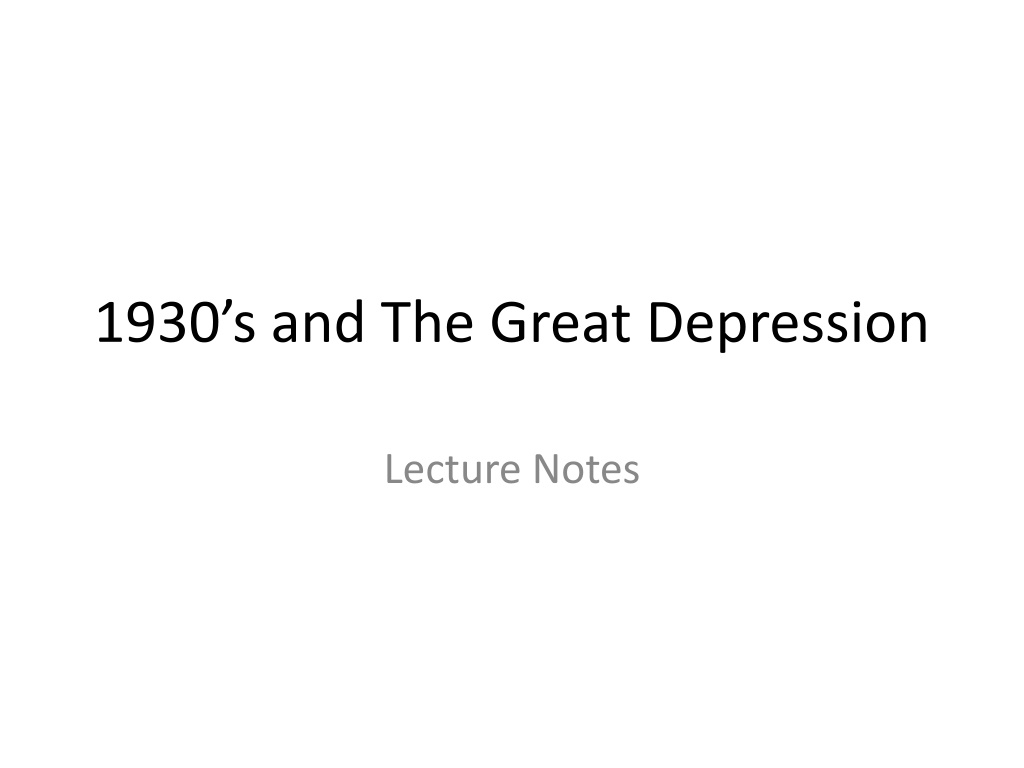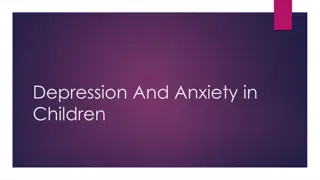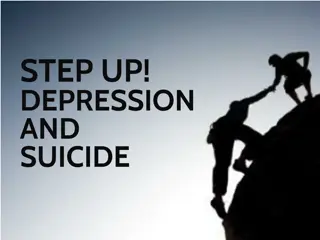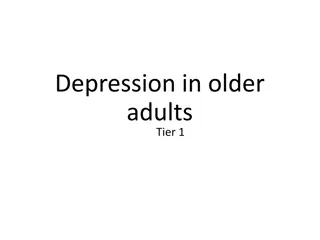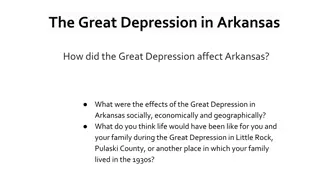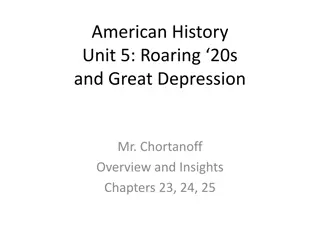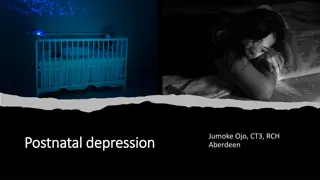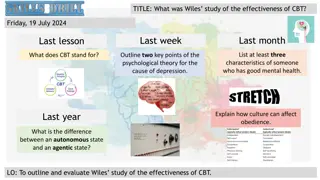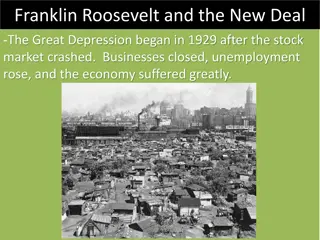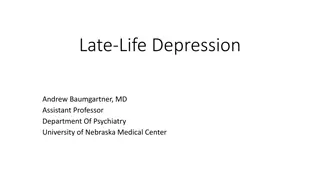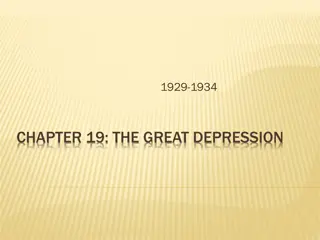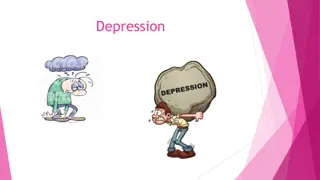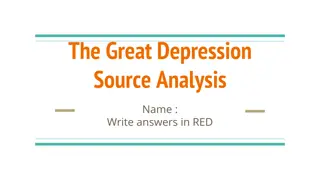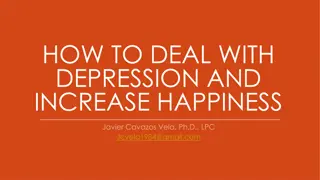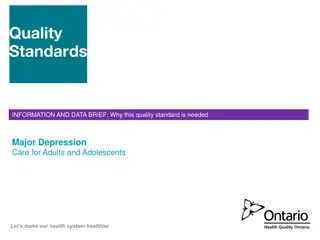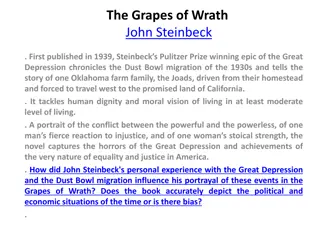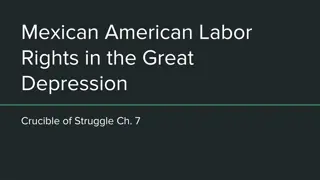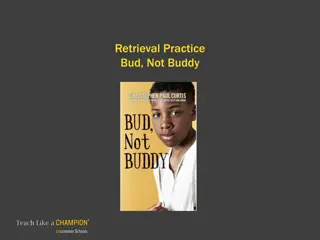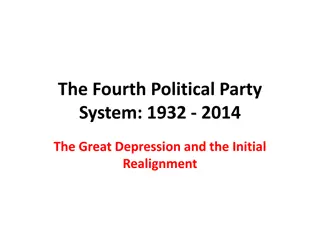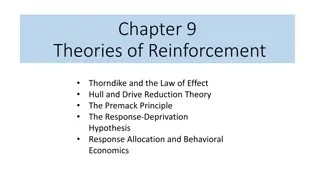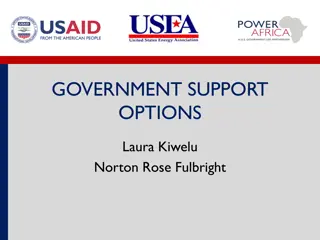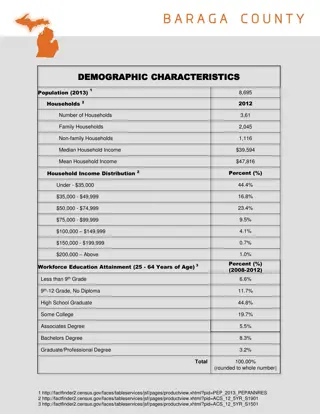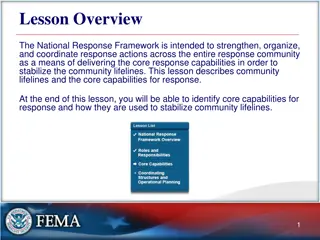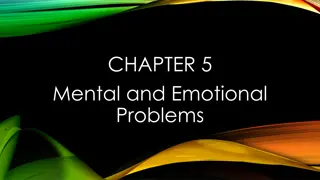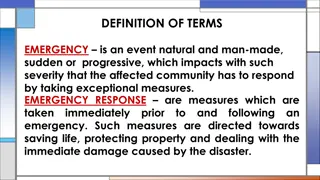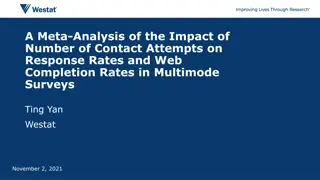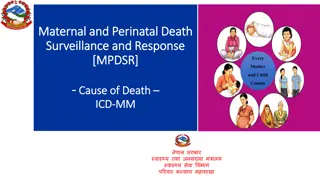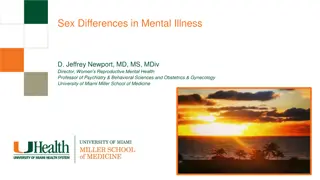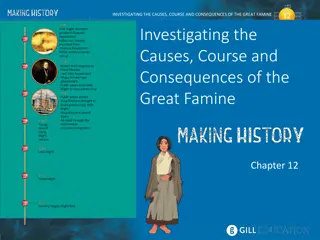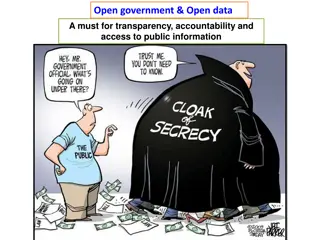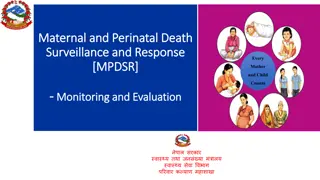The Great Depression: Causes, Impact, and Government Response
The 1930s marked a period of economic turmoil known as the Great Depression. Misleading prosperity, overspeculation in the stock market, and flawed government policies all contributed to the devastating crash of 1929. As the economy collapsed, unemployment soared, businesses failed, and a sense of despair took hold. The government implemented various measures to address the crisis but faced numerous challenges in stabilizing the economy and providing relief. Learn about the complex factors behind one of the most significant events in economic history.
Download Presentation

Please find below an Image/Link to download the presentation.
The content on the website is provided AS IS for your information and personal use only. It may not be sold, licensed, or shared on other websites without obtaining consent from the author. Download presentation by click this link. If you encounter any issues during the download, it is possible that the publisher has removed the file from their server.
E N D
Presentation Transcript
1930s and The Great Depression Lecture Notes
Misleading Prosperity Consumerism was driven by credit installment plans led to debt Uneven distribution of wealth wealthiest 5% earned over 30% of national income Stock market boom was driven by speculation buying on margin Herbert Hoover elected in 1928 defeated Alfred E. Smith (D-NY)
The Crash Black Tuesday - October 29, 1929 panicked investors dump stocks Confidence in the economy disappears thousands of banks failed Businesses failed, unemployment rose
Causes of the Great Depression Unstable Economy: National wealth unevenly distributed More goods than consumers want (overproduction) Many workers didn t see the economic benefits Made economic recovery difficult
Causes of the Great Depression Overspeculation: Buying stocks with borrowed money Used stocks as collateral to buy more stock Stock market based on borrowed money rather than actual value
Causes of the Great Depression Government Policies: Federal Reserve cut interests rates to boost economic growth. 1929: worry about speculation cause FED to limit the money supply (discourage lending) Too little money in circulation to help economy recover after crash.
Depression Humor People blamed President Hoover for the economy Hoovervilles Hoover-blankets (newspapers) Chicken in every pot Rise in dark-humor
The Government Acts Agricultural Marketing Act (1929) Pre crash Relief for farmers & stabilize crop prices Failure, sent prices falling Hawley-Smoot tariff (1930) Highest import tax in history Europe raises their own tariffs Halts international trade Reconstruction Finance Corporation (RFC) Gave government credit to large industries and insurance companies Lent money to banks (for loans)
The Dust Bowl Environmental catastrophe struck the Midwest drought, high winds Okies fled westward to California (Route 66) Struggles of migrant workers detailed in arts Dorothea Lange s photography Woody Guthrie s Dust Bowl Ballads John Steinbeck s The Grapes of Wrath
Relief vs. Recovery vs. Reform Relief: to provide Americans with immediate assistance to help them with basic necessities of life, including food, direct monetary payments and employment. Recovery: A policy or program that has its primary goal to promote growth in the American economy. Reform: A policy or program that was designed to ensure that effects of the Great Depression did not occur again.
The Hundred Days FDR took immediate action national bank holiday (Emergency Banking Act) Fireside Chats Federal Deposit Insurance Corporation (FDIC) AAA, NIRA, CCC, TVA all passed in first 100 days
Creating Jobs Civil Works Administration (CWA) Short term job creation program to build roads, airports, etc. Tennessee Valley Authority (TVA) dams to control floods, generate power
Protecting Workers National Recovery Administration (NRA) codes to help business and labor Wagner Act (1935) guaranteed workers the right to collective bargaining Child labor, minimum wage, and overtime laws passed
Helping Farmers Agricultural Adjustment Administration (AAA) subsidized farmers who restricted production ruled unconstitutional new laws preserved farm subsidies
Challenges from the Right and Left Conservatives attacked the New Deal for being socialistic American Liberty League Liberals claimed that the New Deal did not do enough Francis Townshend campaigned for elderly Father Charles Coughlin Huey Long (Share-Our-Wealth Society)
The Second New Deal Social Security Act provided unemployment, old-age pensions Revenue Act of 1935 reinstated a graduated tax system Works Progress Administration (WPA) schools, post offices, hospitals, parks, bridges, roads, Federal Art Project National Youth Administration (NYA) gave part-time jobs to high school and college students
Challenging the Court Supreme Court had declared some programs unconstitutional AAA, NRA FDR proposed court packing scheme additional justices for each over 70 years old Congress rejected the plan
More Hard Times Recession hit in 1937 federal spending had been cut unemployment rose Roosevelt adopted Keynesian principles deficit spending to encourage growth The New Deal era ends around 1939 Concerns shift to Europe
American Cultural Scene of the 1930s Movies and radio plays were popular during the Depression Mr. Smith Goes to Washington, Gone with the Wind, Marx brothers, War of the Worlds (1938) New Deal promoted American art, theatre, photography Regionalism, folk art Swing music became popular Benny Goodman, Count Basie, Duke Ellington
